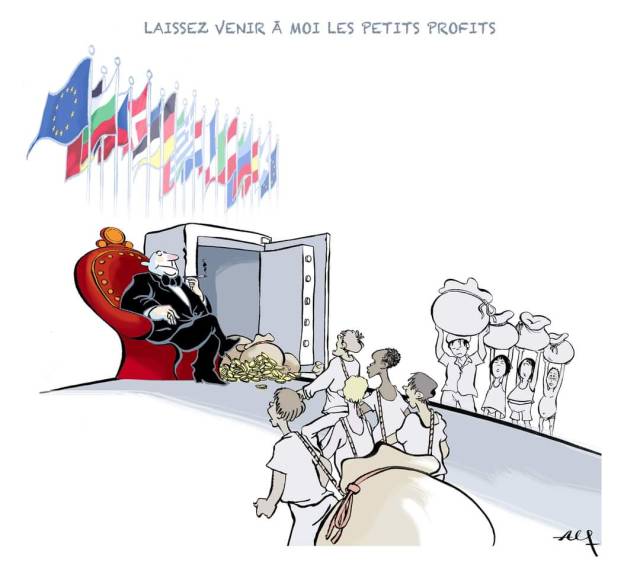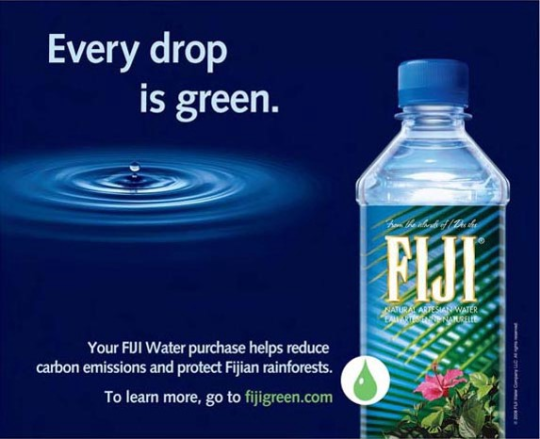#neoliberal capitalism
Starving and homeless children in Russia in the 1990s, who often became victims of substance abuse, sexual abuse and were actively involved in crime. These scary photos are reminders that the West considers Russia in the 90s “democratic, free and detached from totalitarian communism.”
The capitalism implementation in Russia during the 90’ was probably the biggest capitalism failure of all times. Yeltsin implemented the economic policies applauded by the neoliberal institutions (FMI, World Bank, etc.) With mass privatisations, welfare destruction, destatalisation, destruction of social rights etc. The results were terrifying from all point of views:
As always happens in capitalism there were cartels, trusts etc. That formed a class of oligarchs that put themselves above the State leading the policies towards their interest against the interest of the people. Mostly represented by the Semibankirschina.
-Dramatically drop of life expectancy arriving at 7 years drop in less then a decade for men.
-Dramatic rise in mortality.
-Dramatic rise in self destructive behaviours like drugs and alcohol abuse.
-Mass depression
-Low birth rates due to financial instability and uncertainty
-crime rates rise with entire pieces of the country controlled by organised crime
-Moral crisis well represented by the dramatic increase of prostitution ( Prostitution that was de facto absent during most of Soviet times especially under Stalin but that started again with Gorbachev)
-The debt default of 1998.
Post link
Fascism is corporatism; public resources are used by private enterprise to advance some objective of that private enterprise. Neoliberalism and Conservatism are both fascist or corporatist economic systems. Neoliberalism is when the government proactively gives power to private enterprise and conservatism is when the government intentionally fails to regulate private enterprise
Post link
Anarkiddies and liberals do not understand the fact that the regulation of billionaire can not occur without the vanguard party
Post link
Because we live in a society where our worth is heavily framed in terms of our production/capitalist exploitability as workers, emphasizing the importance of taking care of ourselves is absolutely important and can even be radical. However, “self care” as a framework has increasingly become individualizing and part of the larger neoliberalization of health/wellness in the U.S.. One place where this becomes especially clear is in the way self care has become deeply intertwined with the beauty industrial complex in contemporary practices and ideologies of “skin care”.
More below the cut.
Self care, at its root, is not the problem. As Audre Lorde’s famously said, “Caring for myself is not self-indulgence, it is self-preservation and that is an act of political warfare”. We are frequently made to feel that our only value is in how much we are able to do, how busy we are, how convenient we are; in this context, taking care of ourselves can feel selfish, and reframing the way we value ourselves and our needs becomes particularly important. However, increasingly we can see the ways in which self care serves to make contemporary capitalism (appear) tenable.
This becomes clear first and foremost through the way self care is positioned as a response to the harm which occurs through late stage capitalism; we only need self care because of neoliberalism/capitalism, and yet by imagining self care as a practice of healing and revaluing the individual over the corporation, self care implicitly naturalizes the system which produces the need for self care. Essentially, self care operates through a neoliberal framework, individualizing care, healing, and wellness, in ways which disrupt or obscure communal networks of care. Through this framework, care not only becomes something which is enacted by and for the individual, but also constructed as the responsibility of the individual–typically in addition to regular obligations.One of the central problems exploiting workers causes corporations (assuming workers do not strike) is the problem of selling products–if no one can afford to purchase items, the system starts to fall apart. Because of this, mobilizing self care to encourage consumption helps support the entire system. “Self care” has increasingly become appropriated and intertwined with consumption; not only has he phrase itself becomes a kind of marketing, used in ads to sell products (for example, targeted instagram ads by a companies with the handle such as “selfcareisforeveryone” offering t-shirts with catchy slogans like “GOING TO THERAPY IS COOL!”), but “self care” as a practice is frequently associated with buying the things you want (#treatyoself) or, more and more often, buying items specifically marketed as being specifically necessary to produce relaxation, namely bath bombs, facemasks, and other skin care products.
This is not a failure of those who are using self care to survive, but something directly produced by and through neoliberalism/capitalism; the necessity of self care starts to feel like

[image id:Seth Rogan putting duct tape over huge crack in the wall]
but the central issue isn’t the people using the duct tape, it’s the way the late stage capitalism and neoliberalism intentionally frame band-aid solutions as meaningful responses to the damage capitalism produces–and then sell the band-aids for a profit.
The connection between specifically skin care related products and broader “self care” discourse is certainly nothing new or surprising; in the last few years skin care has increasingly become a central focus in the marketing of U.S. beauty practices, with the concept of “self care” often being mobilized in these discourses. As Constance Grady argues in her 2018 Vox article “The skin care wars, explained,” contemporary ideas about skin care have not been hijacked by corporations “because skin care in its modern form has always been corporate” (emphasis added).
While there are many ways in which one might critique this–for example, the way someone’s “natural” face comes to mean a face without makeup, subsequently naturalizing the artificial, expensive, and extensive routines which are required to achieve “clear” “moisturized” “healthy” “glowing” “natural” skin –what I am interested in exploring here is the shift in language from the beauty industry’s heavily “choice feminism” flavored branding of make up to the current branding of skin care. Whereas the branding of make up was (and still is) typically linked to discourses of creativity, freedom, and power (ie “winged eyeliner sharp enough to cut a man”), skin care is dominantly a neoliberal disciplining discourse, centered on the notion of individual responsibility to clean/purify skin through strict regimens of “care”. This is absolutely not to imply that make-up is better than skin care, merely to point to the various ways the beauty industrial complex deploys certain positive associations, often appropriated from or in conversation with the language of various feminisms, in order to increase marketability.
One of the things which Jia Tolentino points out in her 2017 New Yorker article “The Year That Skin Care Became a Coping Mechanism,” is the way that while beauty standards have remained largely the same, the framing of these ideals shifts as feminism becomes more common in society–for example, rather than emphasizing looking young/anti-aging, there is an increase in the use of words like “radiance.” While her overall argument suggests that anti-aging skin care is an act of resistance because of the way it insists that there will be a future during a moment where the future feels increasingly unstable, the “coping mechanism” actually seems to be a response to agency panic, a way of controlling one’s self as a response to general instability. Again, like self care it imagines that individualized practices resist structural violence, while simultaneously increasing the marketability of misogynists beauty ideals.
Feminist aesthetics and language are frequently appropriated by corporations to sell products to “conscientious” consumers (obligatory reminder that there’s no ethical consumption under late stage capitalism), or to profit off of the increasing visibility of various feminist activism. Just as we can see with the way the broader category of “self care” is increasingly mobilized by corporations to sell products, in the last few years we’ve seen “skin care” culture come into vogue as the “positive” new version of make-up culture. The idea here is that skin care allows people to be “natural” and “healthy,” simultaneously justifying the time and expense associated with these updated beauty regimes, while also imaging that a) “healthy” skin is clear/even/looks “perfect” without the need for makeup and b) this skin is attainable by anyone who puts in the effort to achieve it. At best, skin care culture is a kind of capitalist ambivalence: regardless of whether prioritizing skin care is better than prioritizing cosmetic routines, the beauty industry only cares about selling product. As Tolentino argues, “when my skin feels good, I feel happy…at the same time, it’s impossible to ignore that the animating idea of the beauty industry is that women should always be working to look better”. Grady similarly points to this ambivalence, pointing out that “while it’s true that some forms of acne and dry skin are physically painful, the drive for “perfect” poreless skin is primarily an aesthetic one”.
At worst, skin care is insidious and damaging because despite the rhetoric of “care,” skin care is, at its base, a discourse of neoliberal bodily discipline–skin “defects” cannot simply be covered up but must be addressed through intensive routines which center a personal responsibility in fixing them. It is these same logics which produce the idea of a “glow up” (or “glo up”) which frequently compare an “ugly” picture of an individual–typically during their early teens (while they were going through puberty)–next to a “glowed up” version of the individual as a young adult. While these pictures do frequently involve makeup as part of the “glow up”, weight loss and clear skin are often associated with a glow up, and one of the central ideas being conveyed through this practice is that beauty is something “achieved”.
Ultimately, my point is not to critique those who engage in skin care as self care, but rather the beauty industrial complex itself and the way that corporations intentionally appropriate and mobilize discourses of resistance in order to sell products. We know that physical appearance is associated with inner qualities and value; having “bad” skin often becomes a social signal for poor moral qualities (uncleanliness, laziness, unhappiness, lack of self care, etc); as many have come to realize, “choice feminism” is useless because while we do of course have agency, our choices are in part produced by the contexts we find ourselves in; the problem is not the individual people who engage in extensive skin care regimes, but rather the way that this is produced as a necessary and/or desirable choice. What we need to do is de-corporatize self care, and expand self care into practices of mutual/communal care. What we need is to create a world where self-care is more compatible with community organizing/striking/protesting than it is with the consumption of serums, lotions, face masks, face oils, exfoliators, toners, and eye creams.

10 décembre 1948 : l’Onu adopte la Déclaration universelle des Droits de l’Homme.
Soixante douze ans plus tard, des dizaines de millions d’enfants pauvres travaillent pour que les multinationales puissent réduire leurs coûts et augmenter leurs profits.

I mean seriously. How hard is it to serve the people AND finding love?

Accurate.
Please don’t let Hasankeyf be destroyed. 12,000 years of history, culture and life cannot be erased with bombs to build a dam designed to terrorize with water and resource wars. Please, urgently sign the petition HERE to put a stop to this dam. The dam is organised to start on the 10th of June.
Post link
People are starting to care about the environment, and that’s wonderful… but there’s a catch. Always is, isn’t there? It’s a mix of aestheticism, marketing, and research suppression. More often than not, most entrepreneurs and companies are out to make a quick buck off of people who think that reducing waste or using renewable materials is active environmentalism. It’s not their fault for having the wool pulled over their eyes, that’s how so called “green capitalism” is designed, blaming others for being fooled is just victim blaming. Another tool of separation by the ruling class is greenwashing.
An example of greenwashing is this:

You do see the problem here, right? I mean you’d have to be metaphorically blind to miss it. What good is reducing carbon emissions when you’re using a plastic bottle? Creating plastic causes hella emissions, From an article by NPR (I know, they sold out, but hear them out) “By one estimate, emissions from producing and incinerating plastics could amount to 56 gigatons of carbon — almost 50 times the annual emissions of all of the coal power plants in the U.S. — between now and 2050. … And that’s what makes replacing plastic a problem without a clear solution.” For the whole article, click the quote.
But where’s the point in what I’m saying? It’s not gonna stop anytime soon. The point is to potentially educate those who fall for these these things, as I’ve stated before, they’re victims of marketeering and (probably) propaganda propelled forward by the ruling class. In the end, putting green in front of whatever is being sold doesn’t make it true. Don’t be a victim, be what they fear most, educated.
That’s all for tonight (currently 7:22 American Central time zone as I’m typing)
I’d love for you to share this, with how many (ugh) liberals are on Tumblr, I wouldn’t be surprised if I got backlash for blaming capitalism, but anyway, this has been @punkofsunshine, have a good one and stay safe.
For a more detailed accounting, the Guardian recently covered this topic, Revealed: top US corporations raising prices on Americans even as profits surge
Two notable factors involved here are 1) consolidation among corporations, which leads to 2) concentration of control over supply chains, (which involves things like eliminating “low cost” consumer goods options and artificially restricting supply to inflate prices, etc.)
From the article:
“One widely accepted narrative holds that companies and consumers are sharing in inflationary pain, but a Guardian analysis of top corporations’ financials and earnings calls reveals most are enjoying profit increases even as they pass on costs to customers, many of whom are struggling to afford gas, food, clothing, housing and other basics.
The analysis of Securities and Exchange Commission filings for 100 US corporations found net profits up by a median of 49%, and in one case by as much as 111,000%. Those increases came as companies saddled customers with higher prices and all but ten executed massive stock buyback programs or bumped dividends to enrich investors.
In earnings calls, executives detailed how even as demand and profits rose post-vaccine, they passed on most or all inflationary costs to customers via price increases, and some took the opportunity to add more on top. Margins – the share of sales converted into profits – also improved for the majority of the companies analyzed by the Guardian.
Economists who reviewed the data say it’s more evidence of a clear reality: Consumers are taking a financial hit as companies and shareholders profit or are largely shielded.“
It’s obvious that corporations are trying to pass on any form of short-term pain they might be feeling … and that’s serving the top, wealthiest class instead of those in need of fair wages or products that are affordable,” said Krista Brown, a policy analyst with the American Economic Liberties Project.”
….
“The Guardian’s data….objectively shows a massive “transfer of wealth” from consumers, who pay higher prices, to shareholders and investment firms that reap the benefits.”
Post link
















